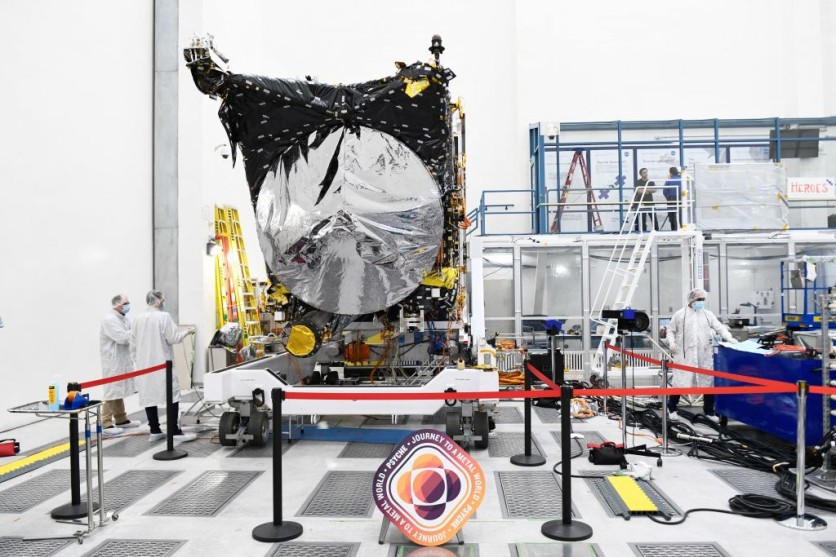NASA and SpaceX have announced a new target launch date for the Psyche asteroid mission. The SpaceX Falcon Heavy rocket's liftoff is now scheduled for October 12 at 10:16 a.m. EDT from Launch Complex 39A at Kennedy Space Center in Florida.
The schedule shift allows NASA to complete verifications of parameters controlling the Psyche spacecraft's nitrogen cold gas thrusters. These thrusters play a crucial role in various aspects of the mission, from spacecraft orientation to managing momentum.

NASA, SpaceX Set New Launch Date for Psyche Asteroid Mission
These parameters were recently adjusted due to updated temperature forecasts for the thrusters. Maintaining these thrusters within their designated temperature limits is essential for long-term functionality.
In preparation for the upcoming launch, NASA, SpaceX, and Psyche mission managers convened for a Flight Readiness Review on September 28 at Kennedy Space Center.
The review covered updates on mission status and confirmed readiness for final launch preparations, including a static fire test scheduled for September 29. According to NASA, the Psyche mission boasts launch opportunities every day between October 12 and October 25.
The Psyche mission is a groundbreaking journey to a giant metal-rich asteroid orbiting the sun between Mars and Jupiter. What sets asteroid Psyche apart is its apparent composition, believed to be the exposed nickel-iron core of an ancient planet, providing invaluable insights into the formation of celestial bodies in our solar system.
While scientists can infer the presence of metallic cores within terrestrial planets like Earth, they remain far beyond reach beneath layers of rock and mantle. Psyche, therefore, offers a rare glimpse into the tumultuous history of planetary formation through colossal collisions and accretion processes.
The mission is spearheaded by Arizona State University, with NASA's Jet Propulsion Laboratory overseeing mission management, operations, and navigation. Maxar will construct the spacecraft's solar-electric propulsion chassis, equipped with an imager, magnetometer, and a gamma-ray spectrometer.
NASA Psyche Mission's Scientific Goals
The Psyche mission aims to achieve insights into a previously unexplored component of planet formation: iron cores.
It also aims to peer into the interiors of terrestrial planets, including Earth, by directly studying the interior of a differentiated body, which is otherwise hidden from view. Additionally, it will explore a new category of celestial bodies, examining a world not composed of rock and ice but of metal.
To fulfill these objectives, the Psyche mission will employ a suite of scientific instruments and investigations, including a multispectral imager, a gamma ray and neutron spectrometer, a magnetometer, an X-band gravity science investigation, and Deep Space Optical Communication (DSOC) technology.
The DSOC technology represents a cutting-edge laser communication system that encodes data in near-infrared wavelength photons, revolutionizing communication between the spacecraft and Earth. This advancement is set to significantly enhance data transmission capacity.
Related Article : Ring Nebula Comes Into Focus: NASA's James Webb Space Telescope Unveils Remains of a Dying Star in Stunning Detail





